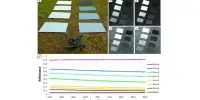Leipzig University researchers have created a highly effective approach to analyze systems with long-distance interactions that had previously baffled specialists. These systems could be gases or even solid substances like magnets, whose atoms interact not just with one another but also with atoms miles away.
Professor Wolfhard Janke and his team of researchers use Monte Carlo computer simulations for this purpose. The desired attributes of the system can be ascertained from the random system states produced by this stochastic process, which was given the moniker of the Monte Carlo casino. In this way, Monte Carlo simulations provide deep insights into the physics of phase transitions.
The simulations, which would have taken millennia to complete using traditional techniques, can now be completed in a matter of days thanks to a new algorithm that the researchers have created. They have published their new findings in the journal Physical Review X.
When a physical system’s macroscopic characteristics, such as pressure or temperature, remain constant across time, it is said to be in equilibrium. When external changes cause a system to lose equilibrium, the system searches for a new equilibrium state, which is known as a nonequilibrium process.
“These processes are increasingly becoming the focus of attention for statistical physicists worldwide. While a large number of studies have analyzed numerous aspects of nonequilibrium processes for systems with short-range interactions, we are only just beginning to understand the role of long-range interactions in such processes,” explains Janke.
The curse of long-range interactions
The number of operations required to determine how a short-range system evolves over time increases linearly with the number of components it contains for systems whose components only interact with their close neighbors.
The interaction with all other components, including those located far away, must be taken into account for long-range interacting systems. As the size of the system grows, the runtime increases quadratically.
A team of scientists led by Professor Janke has now succeeded in reducing this algorithmic complexity by restructuring the algorithm and using a clever combination of suitable data structures. This drastically reduces the amount of time needed to compute in the case of huge systems and enables the study of brand-new issues.
New horizons opened
In systems with long-range interactions, the study demonstrates how the novel method can be effectively used to apply nonequilibrium processes. As a result of an abrupt temperature reduction, spontaneous ordering processes in initially disordered “hot” systems are described, where ordered domains gradually expand over time until an ordered equilibrium state is obtained.
From our daily lives, we know that when we take a hot shower and there is a cold window nearby, droplets will form on the window. The hot steam cools down quickly and the droplets get larger.
Another example is controlled slower cooling processes, where the development of vortices and other structures is of special interest because these have a significant impact on solid state physics and cosmology.
In addition, researchers at the Institute of Theoretical Physics have already successfully applied the algorithm to the process of phase separation, in which, for example, two types of particles spontaneously separate.
Such nonequilibrium processes are crucial to the operation of biological systems and industrial applications. These instances show the variety of application situations that this methodological advancement provides for both basic research and real-world applications.
The third pillar of contemporary physics, after experimentation and analytical methods, is computer simulations. Analytical techniques can only be used roughly or not at all for a large number of physics problems.
With an experimental method, some problems are frequently challenging to access and necessitate intricate experimental setups that can take months or even years. Therefore, computer simulations have made a considerable contribution to our understanding of a variety of physical processes over the past few decades.
















